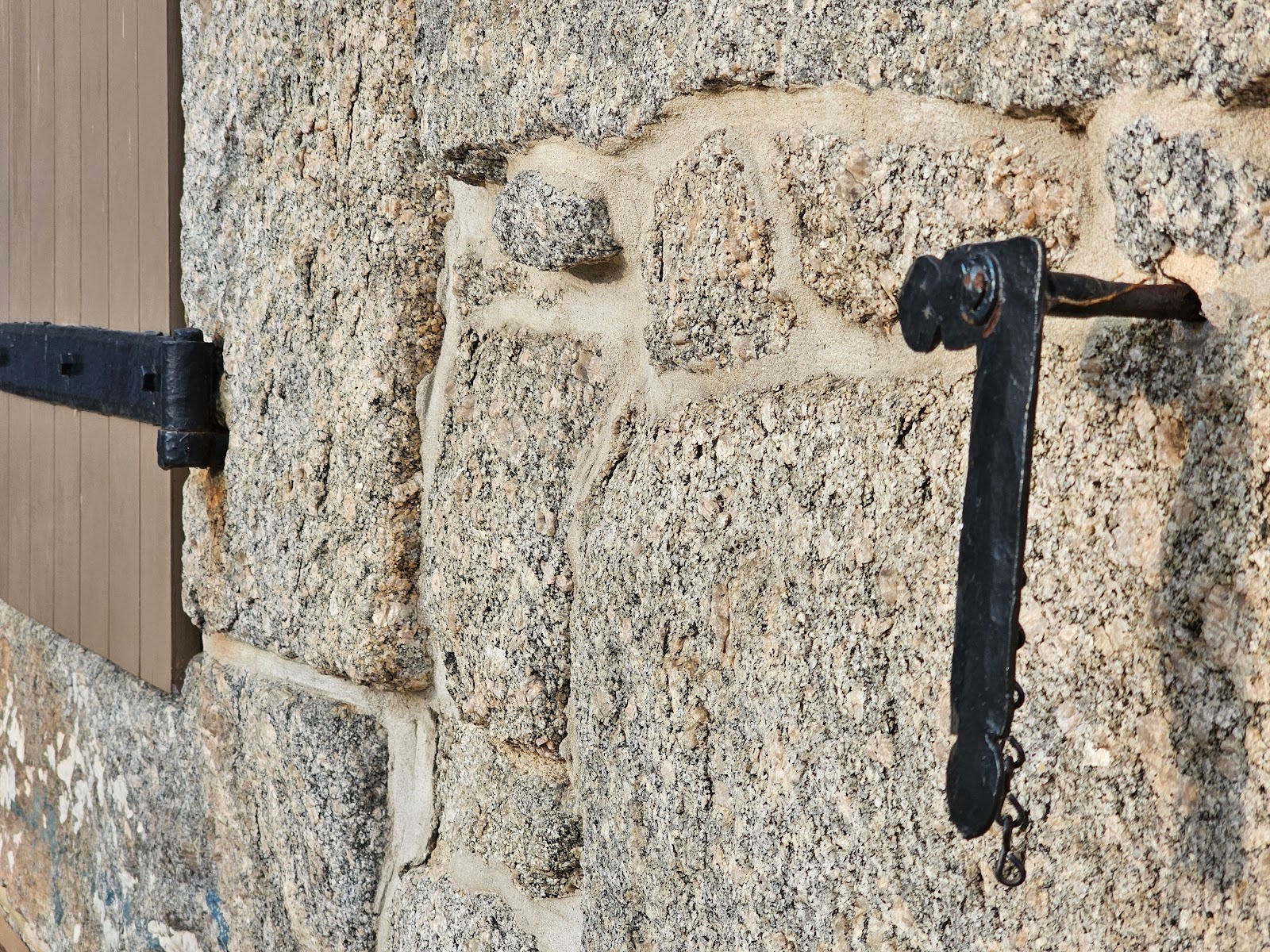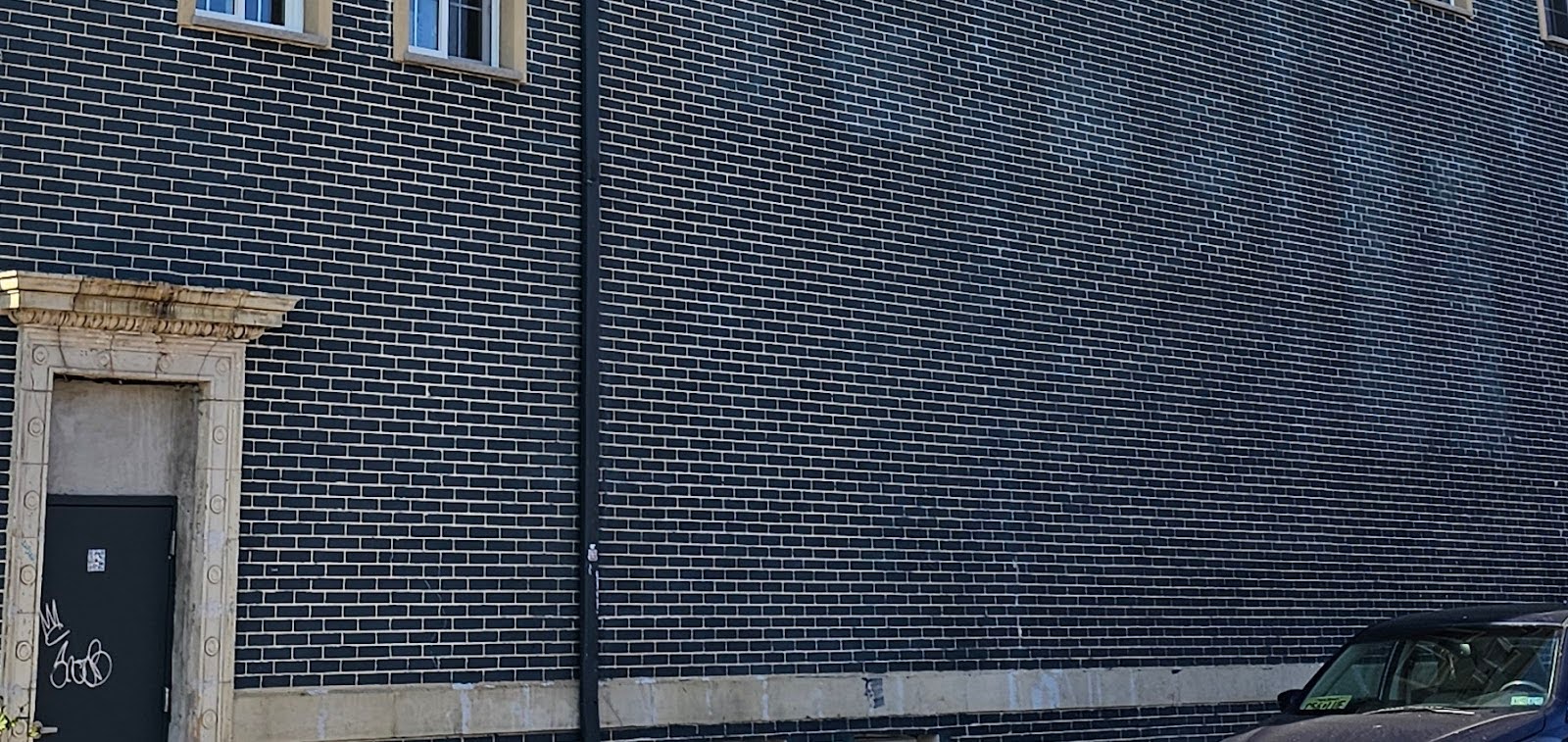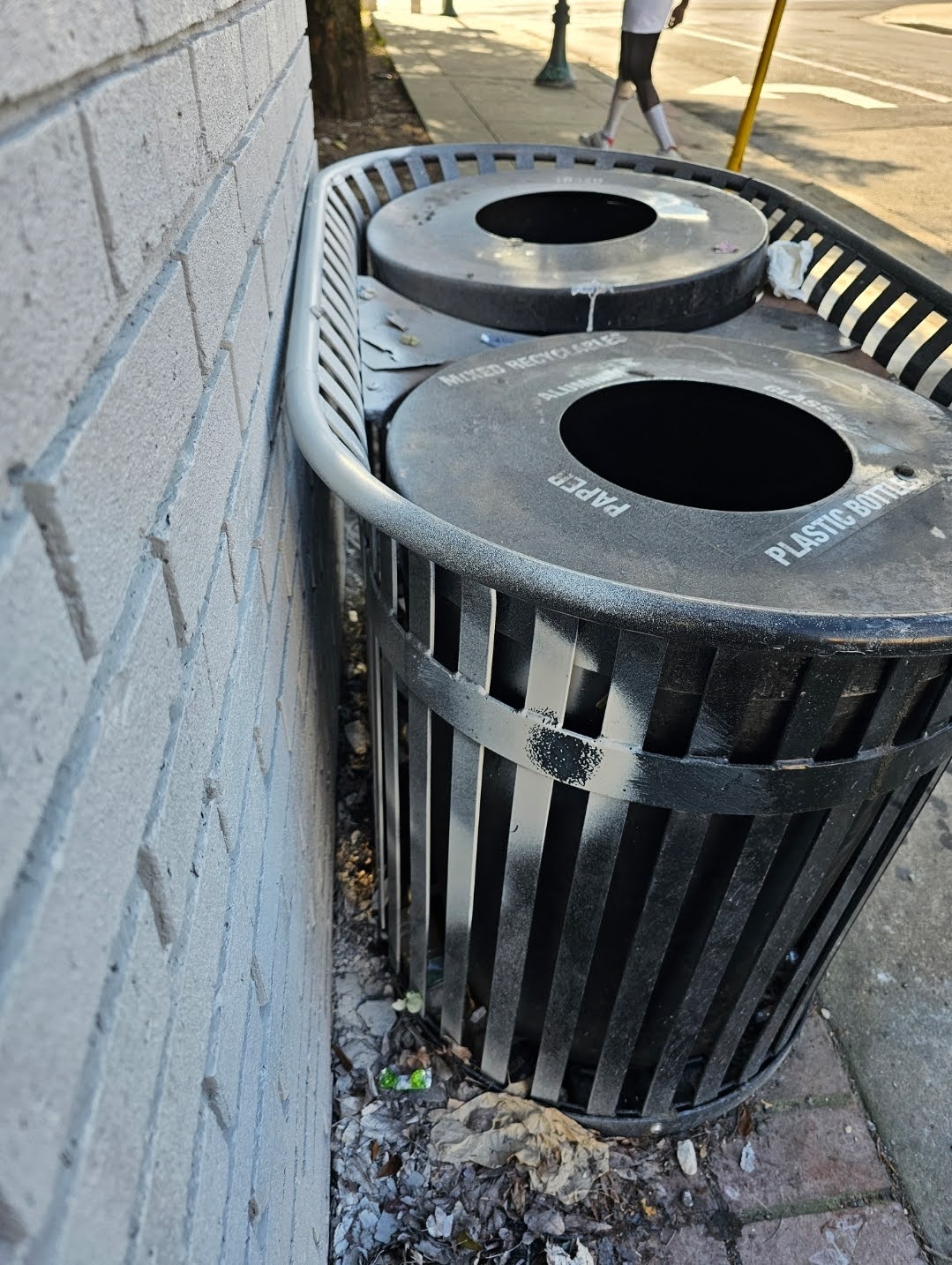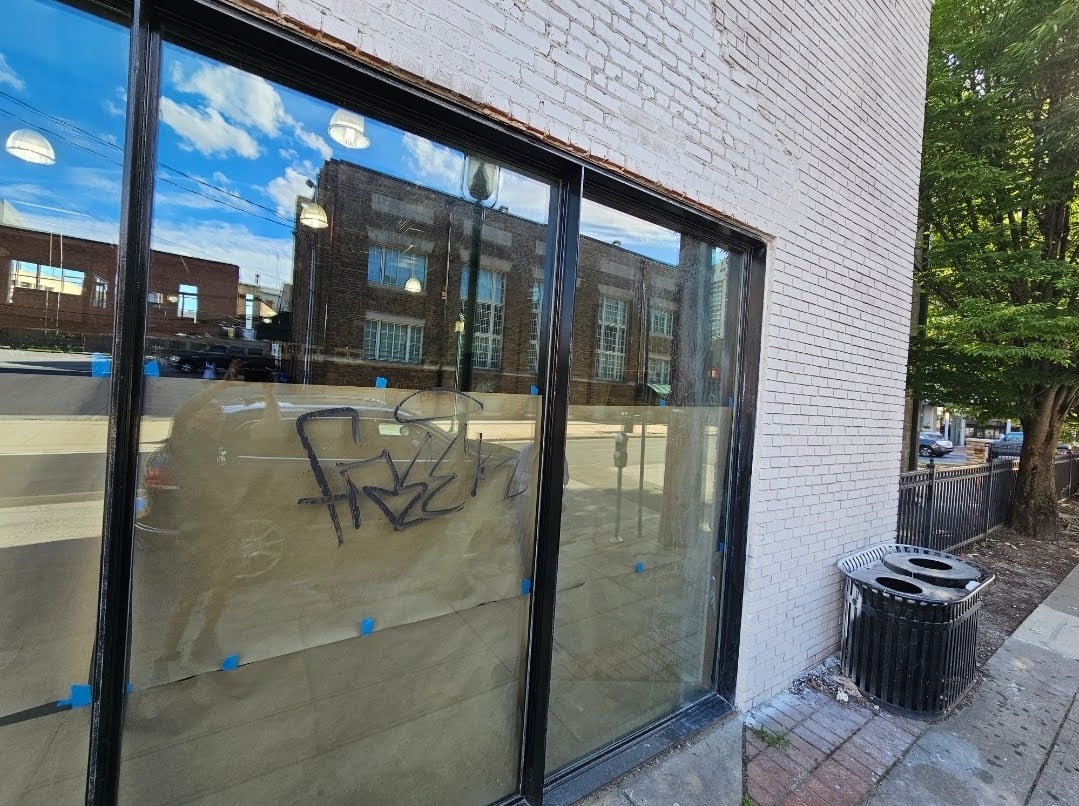Historic Masonry and the Role of Door Dogs
This past week and the week prior we looked at a few different examples of strap hinges at historic building openings. The one that we looked at last week, in particular, was in a historic stone building that was used as the warehouse at the original time of construction. Since then, like many historic warehouses in urban areas, the particular building has been converted to a different use.
We see this trend of conversion happen again and again. Part of the reason for conversion has to do with the changing property values. Currently urban buildings are extremely valuable. It’s also very hard to get zoning or permit approval for large and non-conventional buildings. People love warehouses, for that exact reason. They have tall ceilings and much lighter layouts than more traditional buildings.
The picture below shows a different view of the knuckle or fulcrum point of one of the hinges that we looked at this past week. From the low angle, you can see the point at which the hinge has been formed to have an extending bolt-like appendage. That particular area of the hinge has been inserted or drilled and then forced into the opening in the stone.

From an architectural perspective these hardware type elements add an interesting element of authenticity to the facade. The hinges are not the only elements of the hardware at the openings though. There are also door dogs. Door dogs are similar to shutter dogs, but neither of them have much to do with the actual animals which are called dogs. The name for these hardware elements, dogs, is related to the fact that the hardware creates a grip for an angle from which the hardware holds these doors in position the way a dog jaws might bite into something to hold it in position.
When the door shutter is in the closed position, the hardware hangs downward as shown in the picture below.

A closer view of the hardware element is shown in the next picture below. You can see that instead of being fastened with a masonry screw as we may do in modern times, the shutter dog is set directly into the masonry mortar without a threaded fastener.

Even though the shutters shown in the picture below are lower to the ground than a typical window, it’s still an actual shutter and not a door because they’re slightly smaller than a door height. They were used for loading things in the past, before the building was converted. You can see the shutter dogs to the right hand side.

The header to these openings is particularly large because instead of being a steel lentil or a masonry arch, it’s in a single piece large granite lintel that spans the entirety of the opening.

Although this building is definitely historic and significantly older than most buildings in the area, it has been repointed. The mortar joints don’t look bad. The mortar used for repointing has been selected with a sand and a color that is similar to most historic mortars.

Another picture of the repointed stone masonry surface follows below. In most cases, we talk more about brick repointing than stone repointing. The process is somewhat similar, but not the same. Generally, stone repointing requires more tedious raking of the substrate mortar joint. Brick repointing also requires care. Most importantly though, particularly with bricks, it’s important to use a mortar that is compatible with the masonry. If brick repointing is done by a contractor or person who’s not knowledgeable on the process, the results can be devastating. In fact, it can be more difficult to remove and undo the harmful effects of battery pointing than it is to repoint all together a building that hasn’t been repointed improperly.

Our company, Dupont Tuckpointing and Masonry, specializes in masonry restoration, historic brick repointing, and tuckpointing services in the Washington D.C. area. These buildings are uniquely historic, and their preservation requires skilled masons who are technically trained in the best practices and knowledge of proper restoration techniques.
We understand the significance of maintaining the architectural integrity of these historic structures, and our team of experienced professionals is dedicated to delivering exceptional craftsmanship. Whether you require masonry restoration, tuckpointing, or brick repointing services, we are here to help.
At Dupont Tuckpointing and Masonry, we take pride in our work and strive to ensure that every project is executed with the utmost care and attention to detail. We are committed to preserving the rich heritage of Washington D.C.’s built environment for generations to come.
If you have any questions or needs regarding masonry restoration, historic brick repointing, or tuckpointing services, please do not hesitate to reach out to us. We would be delighted to assist you and provide you with the expertise and quality workmanship that your historic property deserves.
You can reach us by telephone at (202) 796-7644 and you can reach us by email from the contact form on our website at https://duponttuckpointingmasonrydc.com/contact-us/.




